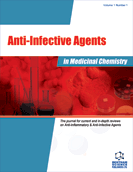Abstract
The worldwide rise in antibiotic resistance by microorganisms has stimulated intensive research toward the development of alternative therapeutic strategies. Photodynamic therapy (PDT) is emerging as a promising modality for the treatment of localized microbial infections. Studies on the relationship between the chemical structure of photosensitising agents and their phototoxicity against microbial pathogens led to the identification of a selected number of compounds with optimal cytocidal effects. These include phenothiazine, porphyrin and phthalocyanine derivatives, whose molecule has been engineered to introduce the following features: (a) presence of cationic moieties, preferably due to quaternarized amino groups; (b) introduction of at least one N-alkyl group having a relatively long hydrocarbon chain; (c) overall amphiphilic character to promote the partitioning in the plasma membrane. Studies on cell cultures indicate that PDT is endowed with favourable properties to act as an antimicrobial modality: (a) broad spectrum of action, since one irradiation protocol can be used to obtain the inactivation of different groups of pathogens, such as Gram-positive and Gram-negative bacteria, yeasts, mycoplasmas and protozoa in both vegetative and cystic stages; (b) fast association with microbial cells, which allows irradiations to be performed after incubation times as short as 5-10 min., thereby guaranteeing a high selectivity as compared with host tissues; (d) high photoinactivation efficiency, since a 5-6 log decrease in microbial population is obtained by irradiation under mild conditions; (e) photosensitising activity independent of the antibiotic-resistance spectrum of the given pathogen; (f) lack of selection of photoresistant strains upon repeated treatment and minimal risk to induce the onset of mutagenic processes. Initial clinical trials involve the treatment of chronic ulcers and selected oral infections.
Keywords: Antimicrobial, parasitic protozoa, antibiotic resistance, photosensitiser, photoinactivation, photodynamic therapy, reactive oxygen species, porphyrins
 5
5





















